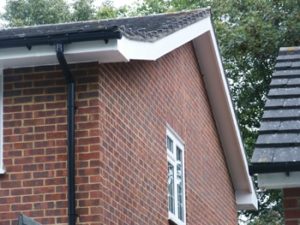
Soffit And Fascia Replacement
Add a review FollowOverview
-
Sectors Restaurant / Food Services
-
Posted Jobs 0
-
Viewed 8
Company Description
10 Things That Your Family Taught You About Fascia And Soffit Repair

Fascia and Soffit Repair: Essential Tips for Homeowners
Fascia and soffit are essential components of a home’s exterior, often neglected by many property owners. These elements play a considerable role in protecting the interior of a home from the components, while also contributing to the total aesthetic appeal of the building. Understanding their functions, common problems, and repair techniques is necessary for keeping a healthy home. This post will supply a comprehensive summary of fascia and soffit repair, along with often asked concerns, an informative table, and checklists for house owners.
What Are Fascia and Soffit?
Fascia
Fascia boards are horizontal planks that run along the roofline, working as an essential structural component. They provide a completed want to the roofing system and function as a support group for the bottom row of shingles. In addition, they play several essential functions:
- Protection: Fascia guards the roofing system and underlying structure from water damage and insects.
- Visual appeal: It improves the visual appeal of the home by offering a tidy and completed edge.
- Assistance for seamless gutters: Fascia boards are often essential in supporting gutter systems.
Soffit
Soffits are the panels that sit below the fascia, creating an enclosed area between the eaves and the side of the house. They offer both practical and visual functions:
- Ventilation: Soffits assist to ventilate the attic, improving air blood circulation and lowering moisture buildup.
- Security: Like fascia, soffits act as a barrier against bugs and weather aspects.
- Visual continuity: Soffits can be completed in numerous products and designs, contributing to the total look of the home.
Typical Issues with Fascia and Soffit
Over time, fascia and soffit can experience different issues due to weather, bugs, and lack of maintenance. Some typical problems include:
- Rotting wood: Exposure to moisture can cause wood rot, weakening the structural stability.
- Bug invasions: Insects, birds, and other pests may infiltrate broken fascia and soffit.
- Peeling paint or staining: Weathering can cause fading, cracking, or peeling of paint, diminishing aesthetic appeal.
- Water damage: Leaking seamless gutters or a damaged roof can result in water pooling, causing damage to fascia and soffit.
- Mold and mildew: Poor ventilation can result in mold growth within the soffit location.
Repairing Fascia and Soffit: A Step-by-Step Guide
Materials Required
To effectively repair fascia and soffit, homeowners need the following materials and tools:
| Material/Tool | Function |
|---|---|
| Replacement boards (wood/vinyl) | To replace damaged areas |
| Paint or sealant | To protect against weather |
| Caulk | To seal joints and gaps |
| Ladder | For accessing elevated areas |
| Power saw | For cutting replacement boards |
| Drill and screws | For attaching the new boards |
| Safety gear | To safeguard against mishaps |
Step-by-Step Repair
-
Examine the Damage: Inspect the fascia and soffit for indications of damage, such as rot, drooping, or staining.
-
Eliminate the Damaged Sections: Utilize a power saw to thoroughly cut out rotten or damaged boards. Be mindful of the surrounding products to prevent further damage.
-
Prepare the Area: Clean the exposed area to get rid of particles and make sure there is a solid surface area to attach the new boards.
-
Install Replacement Boards: Cut new fascia and soffit boards to size. Attach them securely using screws or nails, ensuring they line up properly with the existing structure.
-
Seal and Paint: Apply caulk to any joints or spaces to prevent moisture seepage. Once the caulk sets, paint or seal the new boards to secure versus future weathering.
-
Inspect and Maintain: Regularly inspect the fascia and soffit for indications of wear and tear. Execute preventive maintenance to prolong their life expectancy.
When to Call a Professional
Specific circumstances might call for working with a professional for fascia and soffit repair:
- Extensive damage that involves structural aspects.
- Difficulty accessing high or high areas.
- Lack of experience or convenience with home repairs.
- Installation of customized materials, such as custom-made aluminum or vinyl choices.
Frequently asked questions About Fascia and Soffit Repair
Q1: How can I inform if my fascia or soffit needs to be repaired?
A: Look for indications of water damage, such as discoloration, peeling paint, or rotting wood. In addition, take a look at for insect activity or drooping locations.
Q2: What materials are best for replacing fascia and soffit?
A: Common materials include wood, vinyl, and aluminum, each offering various benefits in terms of toughness, maintenance, and aesthetic appeal.
Q3: Can I repair fascia and soffit myself?
A: Many property owners can perform simple repairs, but it’s essential to evaluate your ability level and comfort. For substantial damage or high locations, think about hiring a professional.
Q4: How often should I examine my fascia and soffit?
A: It’s suggested to inspect fascia and soffit a minimum of two times a year, especially after heavy rains or storms.
Q5: Do I require authorizations for fascia and soffit repairs?
A: Most small repairs do not need licenses; nevertheless, it’s best to consult regional structure codes and policies.
Fascia and Soffit Repair – https://Wedeohire.com, is a needed maintenance job for homeowners that not just protects the structural stability of the home however also boosts its visual appeal. Understanding the common concerns and knowing how to resolve them is important for reliable home repair. Routine examinations and maintenance can save substantial costs in the long run while making sure a safe and attractive living environment. Property owners need to feel empowered to do something about it and address these vital components of their homes.

